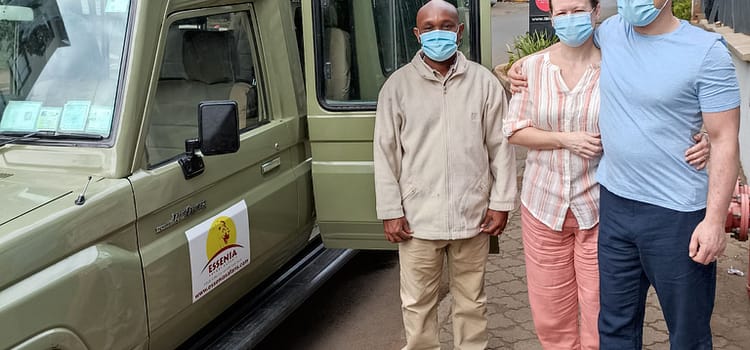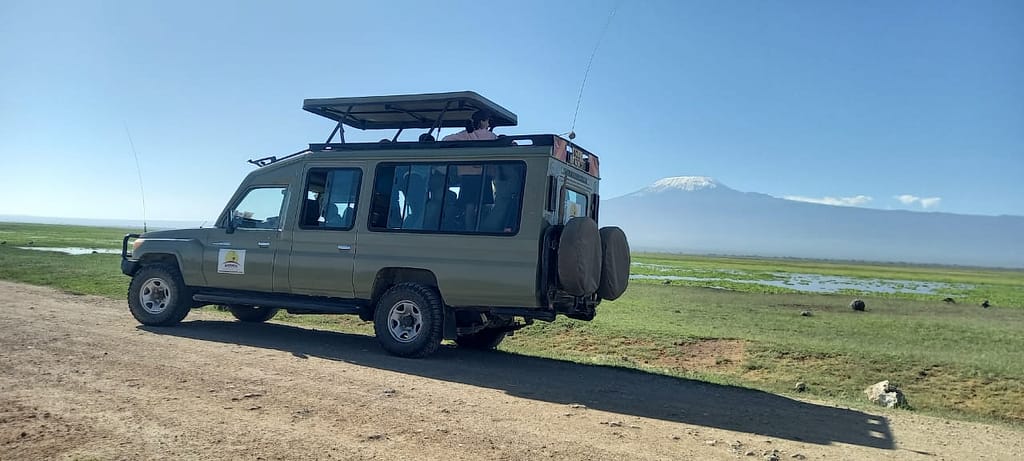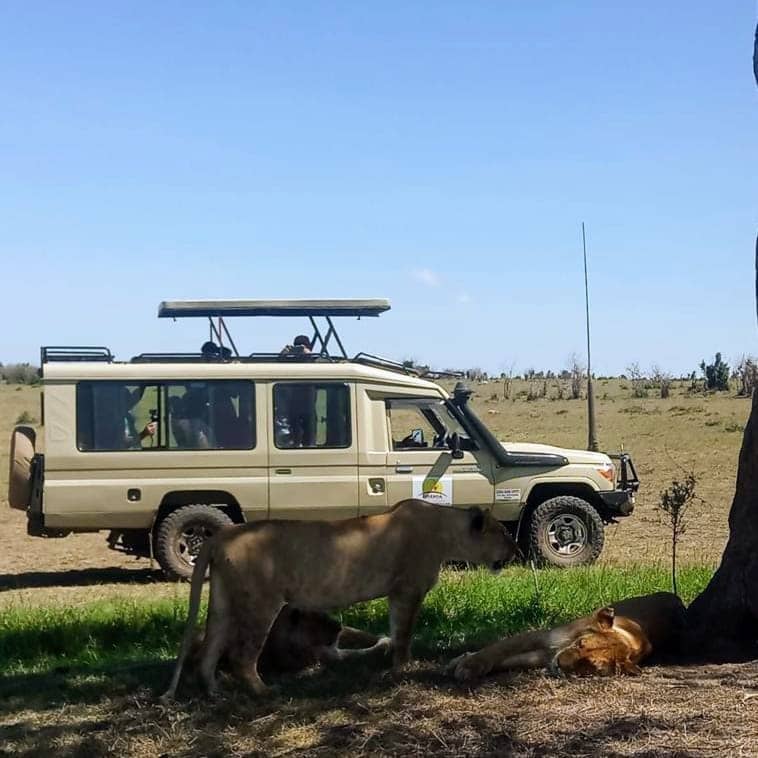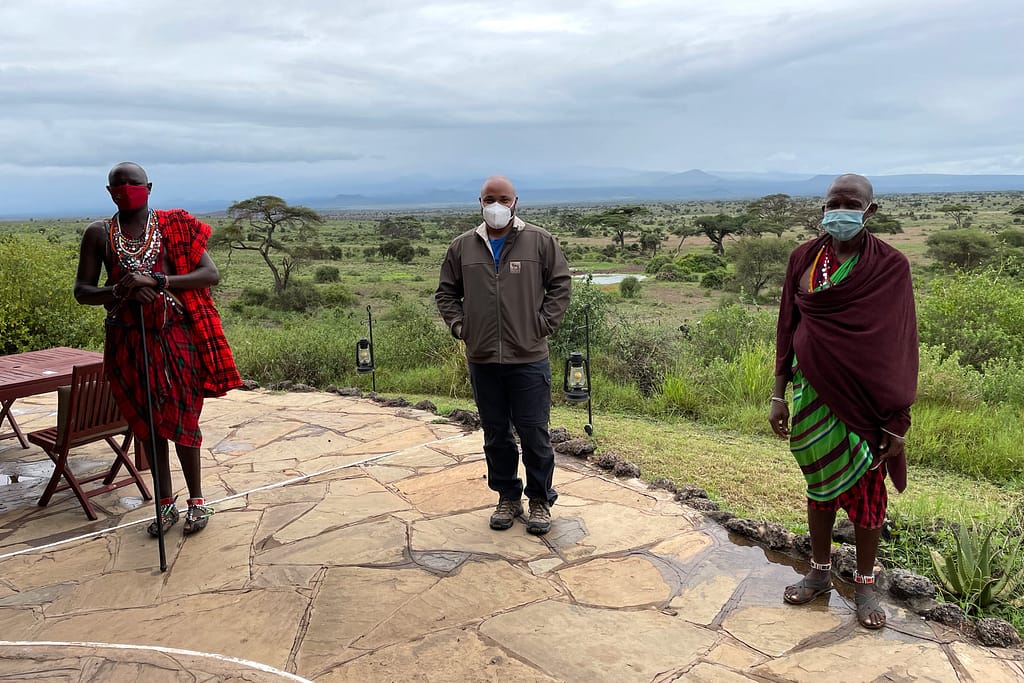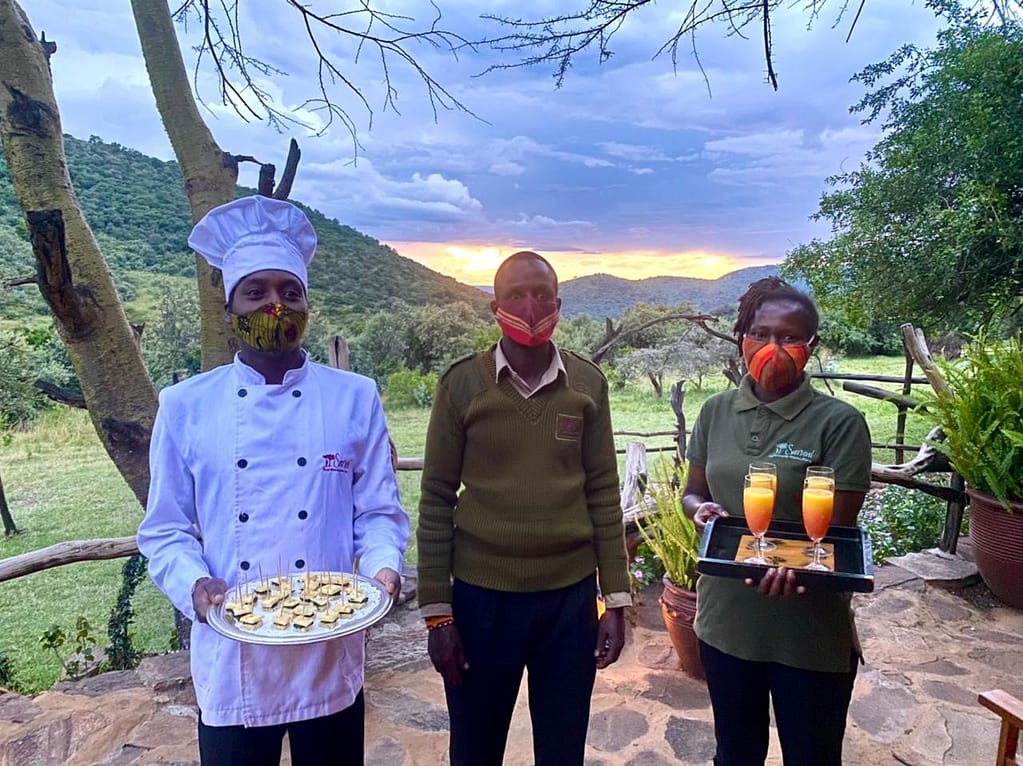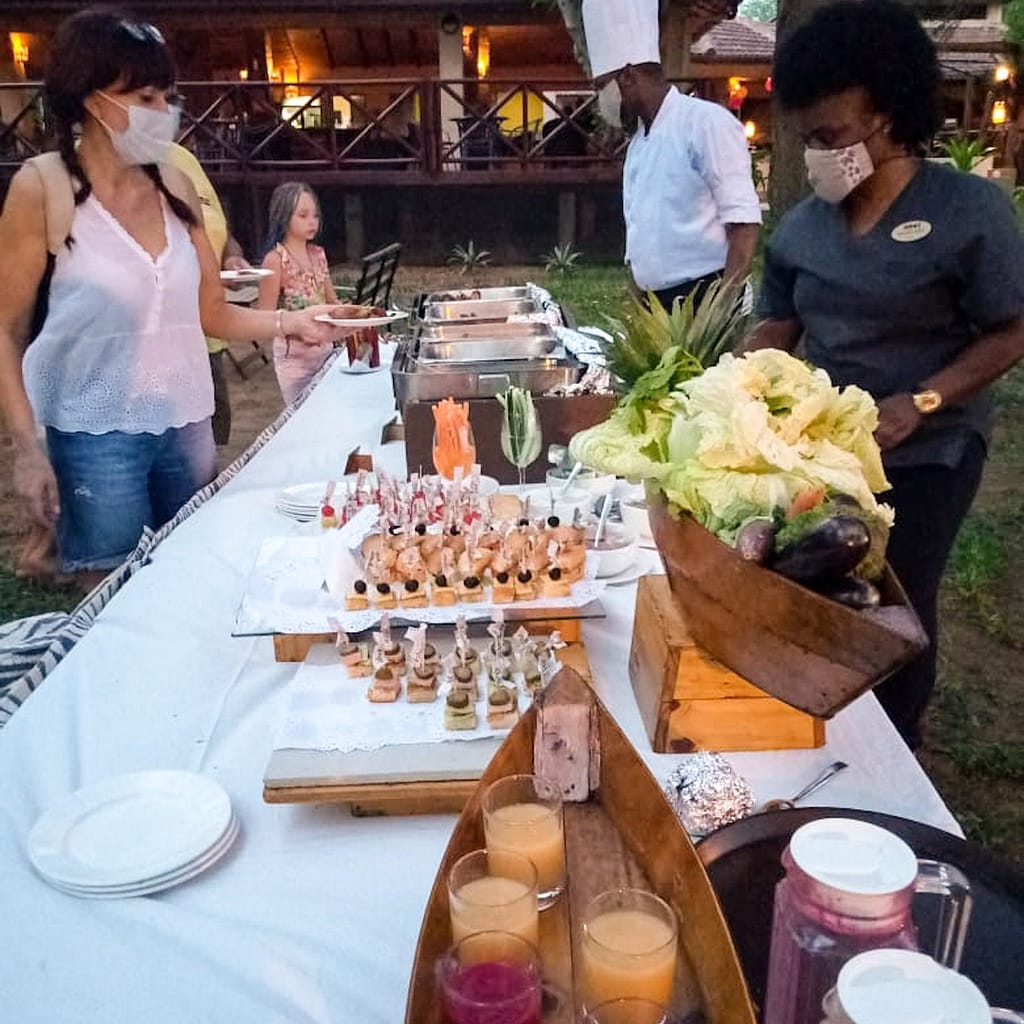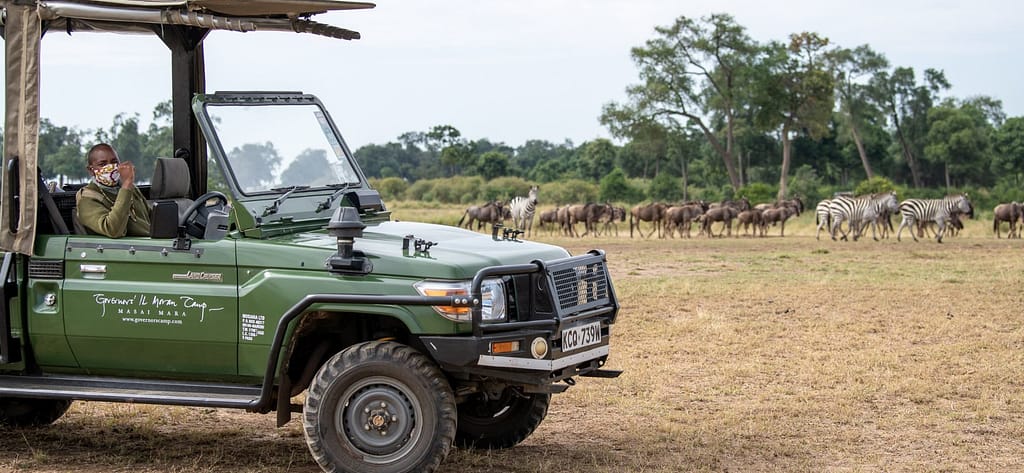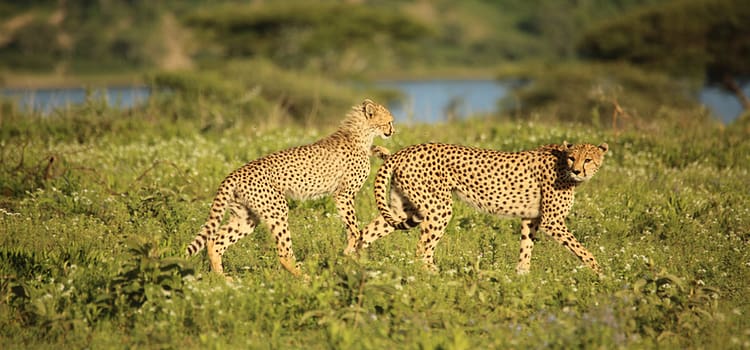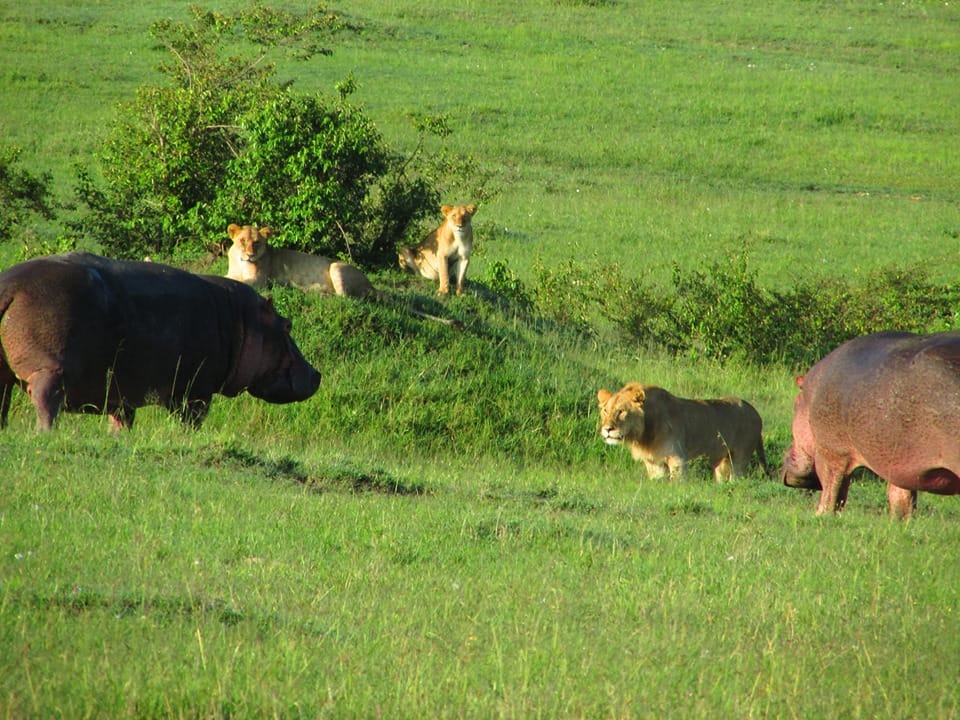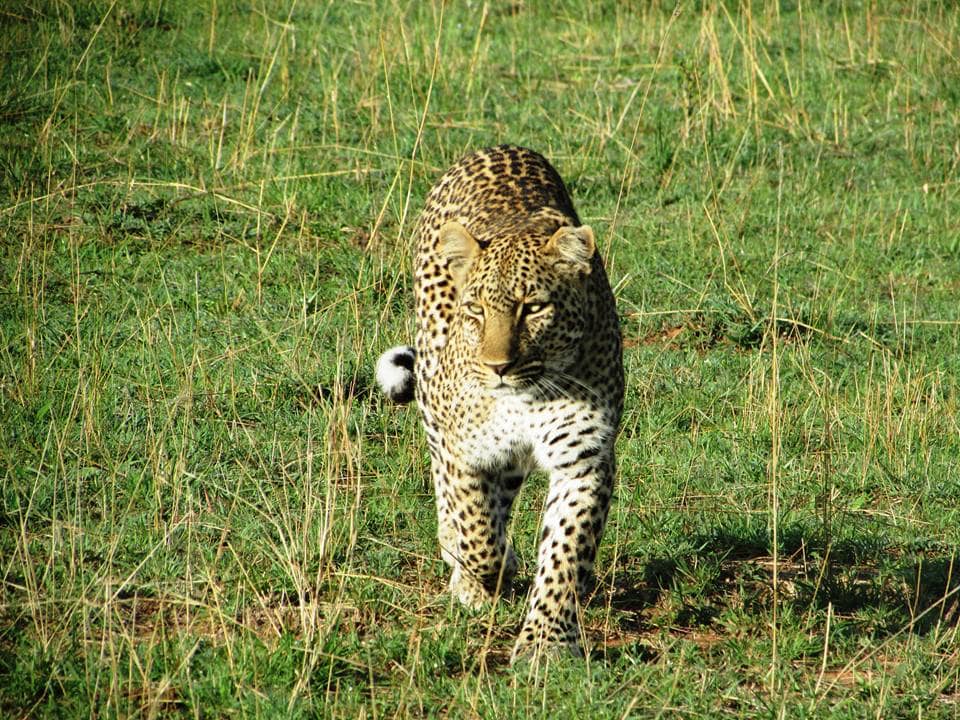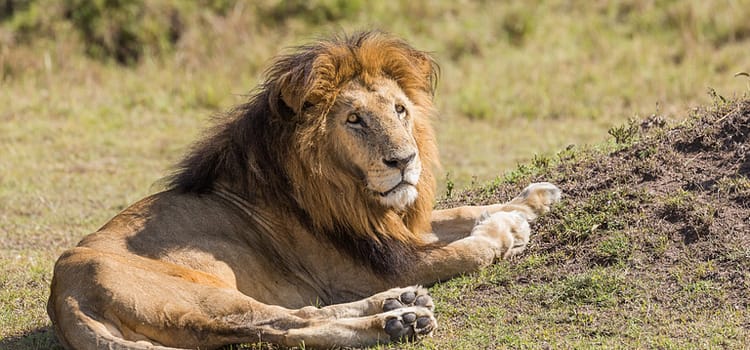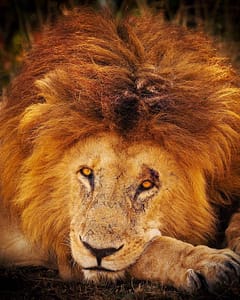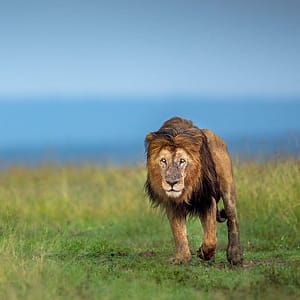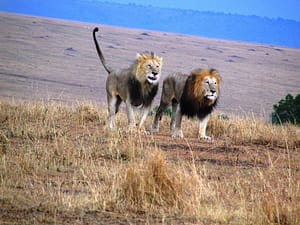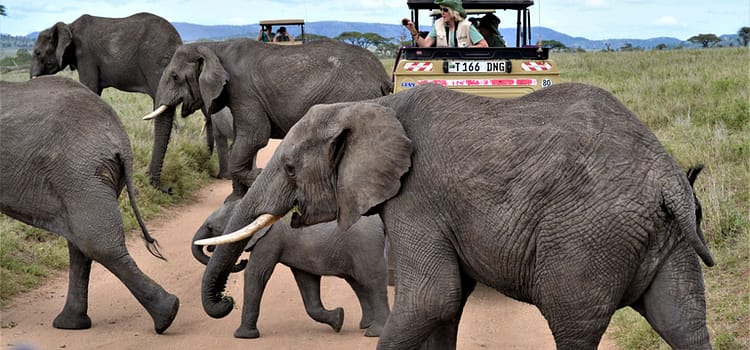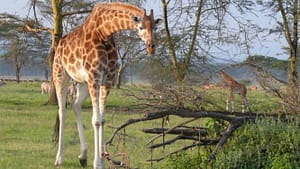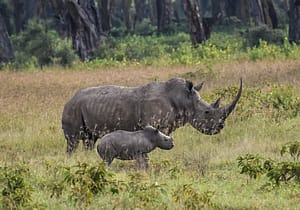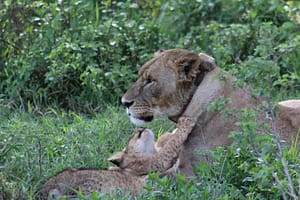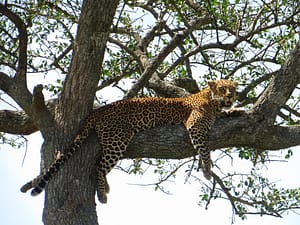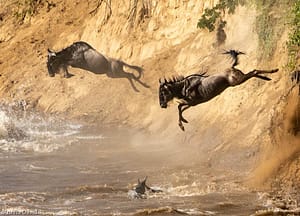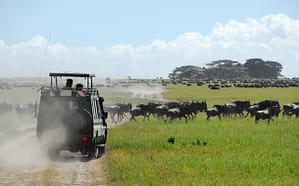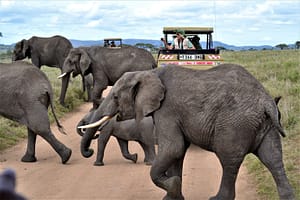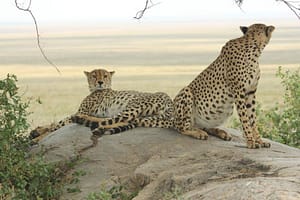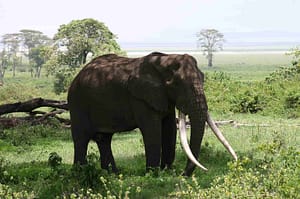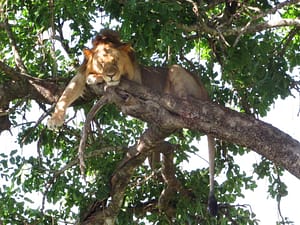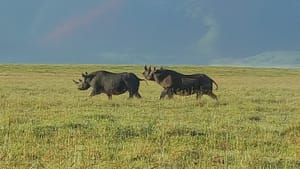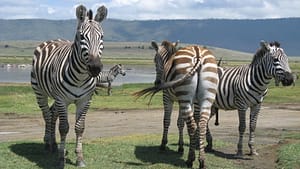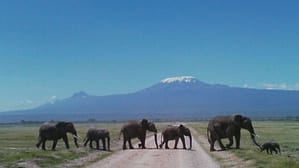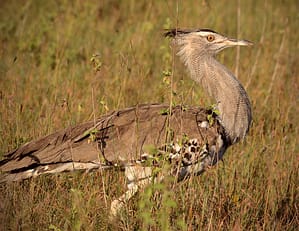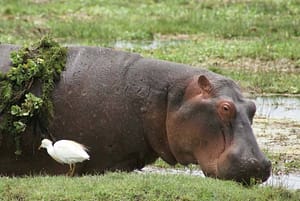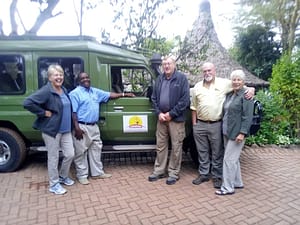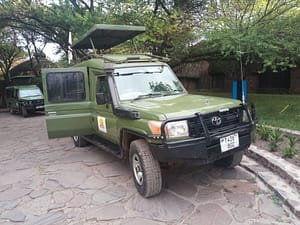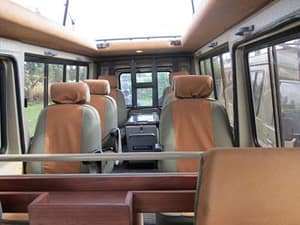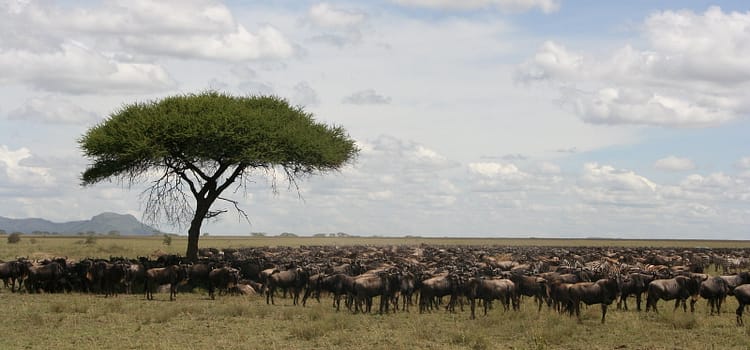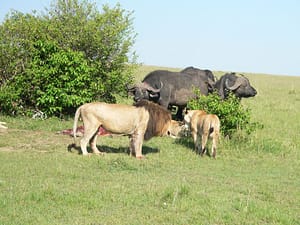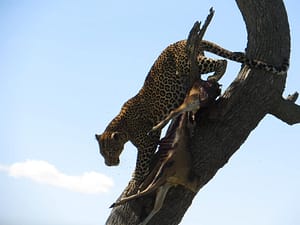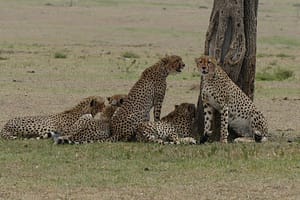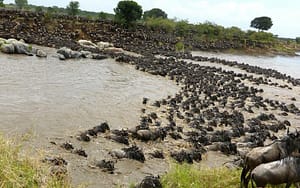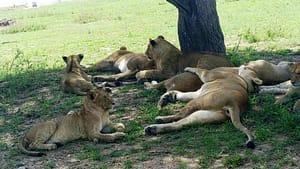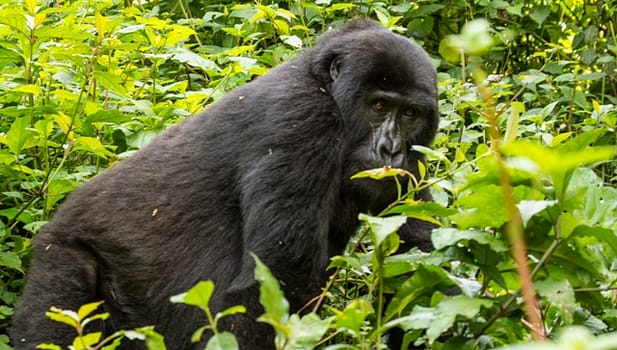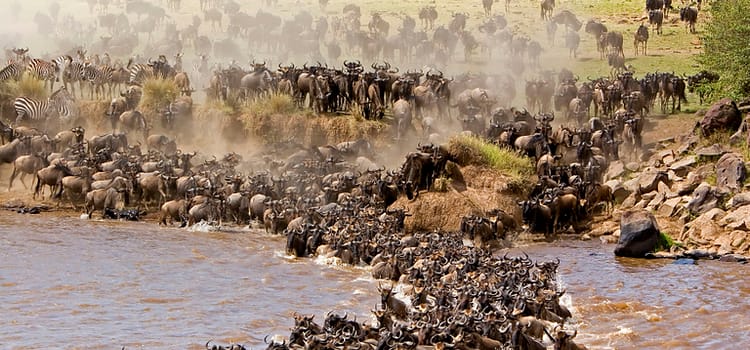What are the Covid 19 entry requirements to Kenya and Tanzania in 2022?
With Covid 19 infection rates having been recorded to have significantly reduced by end of February 2022, the world seems to have turned yet another corner when it comes to tackling the pandemic, and we can only hope that there will be no more outbreaks.
UPDATE ON KENYA: Please note that effective 11th March 2022, all travelers to Kenya who are fully vaccinated will no longer be required to present a Negative PCR test certificate on arrival. https://www.kcaa.or.ke/covid-19/covid-19-travel-requirements They are however still required to upload their vaccination details on the Global Haven website before boarding their flight and also fill the traveler health surveillance form. This is because there will be no manual validation of vaccination details, only online.
Planning to travel to Kenya in 2022? These are the current Covid 19 requirements.
First of all, all travelers to Kenya aged 18 years and above must provide a Covid 19 vaccination certificate at the point of entry. The vaccine administered must be among the ones already approved by the World Health Organization. This requirement has been in place since December 2021. The only travelers exempted from this requirement are returning Kenyans. They must however register themselves on the Ministry of Heath Vaccination portal and will be vaccinated upon arrival at the airport, before they are allowed to head home.
All travelers arriving in Kenya are supposed to present a Negative Covid 19 PCR test certificate at the point of arrival. The certificate must be valid for not more than 72 hrs since the test was taken. Travelers are also required to fill in the Ministry of Health’s travelers’ surveillance form at https://ears.health.go.ke/airline_registration/ before boarding their last flight to Kenya.
After receiving a negative PCR test result, travelers to Kenya are required to register and upload their vaccination and test result for validation at the global heaven website before boarding their flight to Kenya.
Children aged below 5 years are exempted from the three requirements above.
To depart Kenya, all travelers travelling to a destination / country that requires prove of a Negative Covid 19 test must show proof of the same at the point of exit of having met that condition, before being allowed to depart Kenya.
There are several clinics and hospitals in Kenya that have been approved by the Kenya Civil Aviation Authority to administer PCR tests in Nairobi and others cities. In Nairobi, Covid 19 testing prices range from USD 50 to USD 100 depending on the facility where the test is taken. Results are ready after between 6 and 24 hrs, depending on the facility where the test is taken, and the price paid as some clinics can issue results within 3 hrs but at a higher cost.
If you are on safari in Amboseli, Lake Nakuru National Park, Masai Mara National Reserve and other parks within Kenya and will need a PCR certificate before departing in Kenya, we can facilitate for a test to be done at your lodge. This however costs more due to logistical challenges by the testing labs which are mainly based in Nairobi. The current cost of a PCR test in Amboseli and Masai Mara is about USD 120 per person (based on minimum 2 people) while it costs about USD 100 while at Lake Nakuru. Results are ready after 24 hrs so you need to ensure that you register to get your sample collected at least a day before.
While traveling in Kenya, standard Covid-19 protocols (masking, social distancing, and sanitizing) will be adhered to by your guide and those working in the tourism industry, while in public settings, airports/airplanes, and the common areas of accommodations. All full time Essenia Safari Experts guides have been fully vaccinated against Covid-19.
Much of your time while on safari will be socially distanced from other travelers and the general public.
Please note that social distancing and wearing of face masks is a mandatory requirement in all public areas and establishments while in Kenya.
What are the Covid 19 Entry Requirements to Tanzania?
All passengers travelling to Tanzania are supposed to present a Negative Covid 19 PCR test certificate issued within 72 hrs before arrival.
Also, all travelers arriving in Tanzania will be subjected to enhanced screening for Covid 19 through a rapid test. The cost for the rapid test upon arrival in mainland Tanzania is USD 10 per traveler.
All passengers arriving in Tanzania and Zanzibar must truthfully fill a health surveillance form in the link below https://afyamsafiri.moh.go.tz/ within 24 hours before arrival. Once completed the traveler will receive a completion notification containing their Unique Health Code (UHC) which they will present upon arriving.
The Rapid test cost of $10 per traveler and can be pre-paid online when you complete your online Traveler’s Health Surveillance Form (strongly recommended to pre-pay to avoid unnecessary queue upon arrival).
While traveling in Tanzania, standard Covid-19 protocols (masking, social distancing, and sanitizing) will be adhered to by your guide and those working in the tourism industry, while in public settings, airports/airplanes, and the common areas of accommodations. All full time Essenia Safari Experts guides have been vaccinated against Covid-19.
Please note that wearing of face masks is a recommendation but not a mandatory requirement in Tanzania. Most of your time while on safari will be socially distanced from other travelers and the public. However, if you plan to travel in a more populous area (city or town), we recommend being masked when social distancing cannot be maintained.
Before departing Tanzania, you might need a negative PCR test certificate to be allowed to board the flight to your next destination. The cost of a PCR test in the mainland is USD 50 per person and can be booked in advance at https://pimacovid.moh.go.tz/#/booking . This does not however include a facility fee of USD 20 per person (For safari in the northern circuit- Arusha, Kilimanjaro, Lake Manyara, Tarangire, Ngorongoro and Serengeti). If you book a safari with us, our staff will book your PCR test in advance (depending on your safari and departure date). You will then pay for the testing and facility fee to our staff in Tanzania.
What are the requirements for arriving passengers to Uganda?
Arriving passengers should hold a negative COVID-19 PCR test certificate issued within 72 hours from the time of sample collection to boarding of the aircraft leaving the country of origin. https://caa.go.ug/frequesntly-asked-questions-and-procedures-in-relation-to-covid-19-requirements-at-entebbe-international-airport/
What are the other requirements/arrival process for arriving passengers?
All passengers will be required to go through the recommended Port health procedure of identifying body temperature and symptoms.
Please note that the mandatory testing of all incoming passengers at Entebbe International Airport was suspended effective February 16, 2022.
What are the COVID 19 PCR test requirements in relation to children?
Children below six (6) years will be exempted from the requirement for a negative PCR test certificate if they are accompanied by parents holding a negative COVID -19 PCR test certificate.
What are the requirements for departing passengers?
Passengers departing Uganda through Entebbe International Airport (EIA) must have an authentic negative COVID-19 PCR test certificate issued within 72 hours from the time of sample collection to boarding aircraft. In case the destination country’s PCR test time requirements call for less hours, that takes priority.
Passengers departing Entebbe International Airport are required to know, understand, and interpret COVID-19 requirements of the country they are travelling to.
All COVID-19 PCR test certificates for departing passengers MUST indicate TRAVEL as the intended purpose of test.
DURING YOUR SAFARI WITH US:
While on safari in Uganda with us, standard Covid-19 protocols (masking, social distancing, and sanitizing) will be adhered to by your guide and those working in the tourism industry, while in public settings, airports/airplanes, and the common areas of accommodations. All full time Essenia Safari Experts guides in Uganda have been vaccinated against Covid-19.
Much of your time while on safari will be socially distanced from other travelers and the general public.
Please note that social distancing and wearing of face masks is a mandatory requirement in all public areas and establishments while in Uganda.
COVID 19 TESTING IN UGANDA: Our Ugandan team will facilitate pre departure PCR testing for all our clients when they are on safari. An appointment will be made well on time to meet the requirements of your next destination. Cost of PCR testing and facilitation fees will be paid while you are in Uganda.
Advantages of a Low Season Safari to Kenya and Tanzania
Why is the Low Season the best time for a Kenya and Tanzania Safari?
Often, travelers who are planning a safari to Kenya and Tanzania find themselves wondering whether it would be worth it visiting during the low and green season months of April, May and November.
As professional safari experts for Kenya, Tanzania and Uganda, we give you advantages of booking a low season safari in order to help you to make an informed decision.
Talk of Lowest prices on accommodation and international & local flights, less crowded parks and lodges, and that rare opportunity to see the normally dry African Savannah turning ALL GREEN and teeming with life ..
These are just but some of the reasons why the low season months are the best for a Kenya and Tanzania safari.
Did you know that most special interest tourists like Professional Photographers,
Ornithologists, Wildlife Photographers and Researchers prefer the period between April and June for their visit to Kenya and Tanzania national parks and reserves?
The period between July and October is normally the busiest for Kenyan safaris.
This is not only because it coincides with the Summer when most people go on holiday, but also because of the rare wildlife spectacle of millions of wildebeest making that annual pilgrimage between the Serengeti and Masai Mara National Reserve. The same applies to Tanzania, which unlike Kenya is also very busy in January and March due to the wildebeest calving season in Ndutu, south of the Serengeti.
However, there is a rising number of both seasoned and first-time tourists who have discovered the secret in travelling during the green season. Kenya and Tanzania experience the long rains in April and May but this never degrades the ultimate safari experiences that East Africa is famous for in any way.
If anything, it only adds to the adventure and thrill of an Africa safari.
Contrary to common belief that most roads are impassable, driving is quite manageable especially if you are using a 4 x 4 WD safari land cruiser- the ultimate off-road beast. Those who do not prefer to drive can fly to most parks using Safari Link, Air Kenya, Governors Aviation or higher private charters in Kenya, while Regional Air, Air Excel, Coastal Aviation and Auric air are the leading safari airlines in Tanzania.
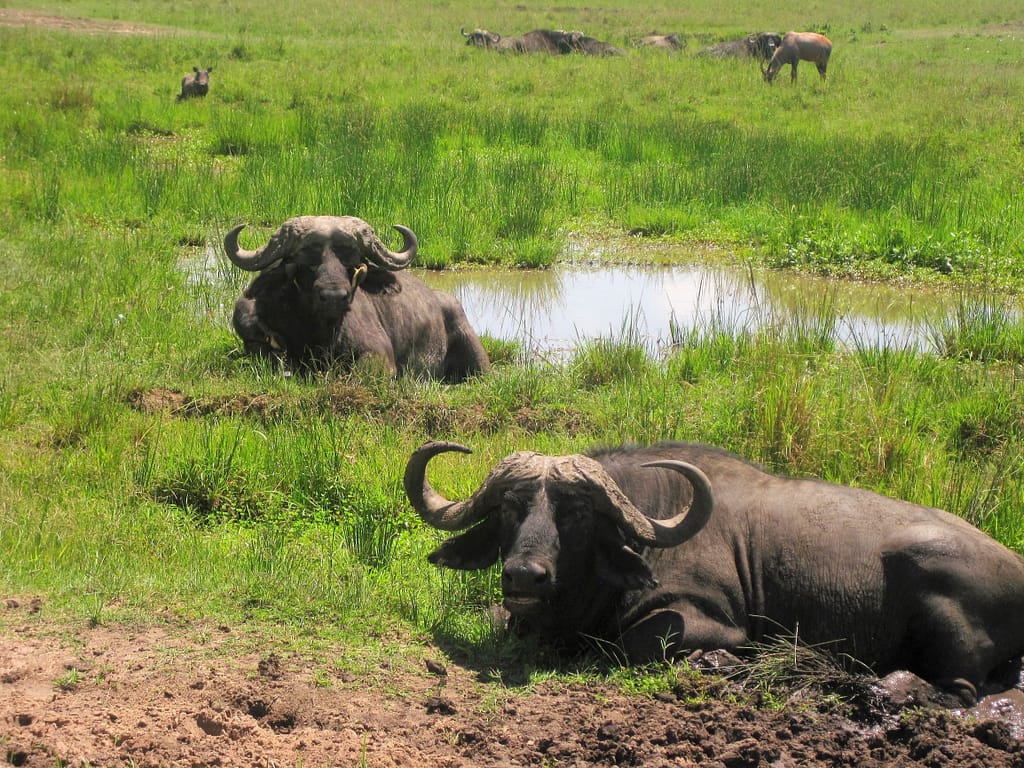
CHEAPER ACCOMODATION RATES:
While travelling during the low or green seasons, you benefit from highly discounted rates for your accommodation. This means that you can stay at some of Kenya and Tanzania’s popular safari camps and lodges at less than 50% of what you pay between July and October. You therefore save money, or have a higher budget to spend more nights on safari. Due to fewer tourists, this is also the time when you get highly personalized services and attention from the lodge staff. This must be one reason why most elderly tourists just love to be in East Africa during this season as they get that per minute attention that they rarely get back home or at any other destination.
UP CLOSE AND PERSONAL MOMENTS WITH AFRICAN WILDLIFE:
One of the most important aspects of an African safari is that authentic, wildlife safari experience, and it never gets eroded during this season, if anything, it gets even better.
Among the main reasons for wildlife movement is search for food, whether it is prey or greener pastures for grazing. After the dry spell that drives animals for miles in search of food, April brings the rains that replenish the vegetation, leading to less movements of herbivores as they have enough to feed on. The search for vegetation cover and privacy from human interference are other reasons that lead to wildlife movement. However, with the growth of vegetation, especially the tall grass and with only a few tourist vehicles in the parks, animals tend to stay very close to main park areas without much movement. This means that depending on the location of your lodge, you don’t have to drive for hours looking for wildlife during your game drives.
GREAT WILDLIFE PHOTOGRAPHY:
With less tourists in the parks, you get more time with the animals because most of the time, they will not move unless they are disturbed. A sleeping Lion, Cheetahs relaxing under a tree or a Leopard resting on a branch of an Acacia tree will remain calm and peaceful in the presence of only a few tourists, most likely your safari vehicle and one or two more being the only ones around a sighting during the low season. This offers you a great chance to take more photos from different angles, and to also shoot some wildlife videos.
It is not surprising to find a pride of lions, a Cheetah with cubs or a herd of buffaloes lying or feeding unperturbed, off a game driving track just a few meters to your lodge or camp.
Picture this, that moment during an afternoon game drive when your safari driver guide, after a long moment of silent search suddenly leads you up to a whole pride of Lions, probably 3 males, 6 females and over 8 playful cubs, both juvenile and infants, all lying by the roadside. As if that is not enough, the cubs amused by the arrival of a single safari vehicle will try to inspect it by scent and even walking across it from below, going around it for over 10 minutes before returning to their mothers and taking a pose for yet another photo? These are the imaginary moments that are more likely to come true during the low season when there is less human interference to the wildlife. Rare, pristine wilderness moments have happened in the past during this season, and it will be going down again this year, and in the years to come.
BEAUTIFUL LANDSCAPE:
Imagine that afternoon in mid-April when the sky darkens as towering thunder clouds brew up a storm that shuts out the sunlight and transforms the landscape into a brooding sweep of ink grey. A herd of Buffalos, 200 plus strong, march towards a sculpted Balanite tree – the desert date that looks like an Acacia with its flat-topped crown neatly trimmed below by Elephants and Giraffes.
The bright contrast between the light, dark grey clouds and the green vegetation offer you that perfect opportunity to capture awe inspiring sunrise or sunset images during the low season. Often, there will be some showers in the evening, followed by some sun and the rainbow making an appearance. If you are a photographer, we know you are already imagining the magical shots that you would be lucky to take if you were presented with such a scenario? That’s safari for you during the low season!
NEW BORNS AND THE CALVING SEASON:
The short grass plains of Ndutu in Tanzania’s Ngorongoro Conservation area and extending all the way to southern Serengeti are a bee hive of action between February and March. This is the time when the migrating wildebeests give birth en masse in what is known as the calving season. Wildebeest’s time their giving birth to coincide with long rains season which begins in end of March. This ensures that the newly born calves will find some soft and juicy sprouting grass to feed on. During a three-week window between late January and February, up to 8,000 calves will be born daily, with about 500,000 young ones being born by the time the synchronized birthing is over.
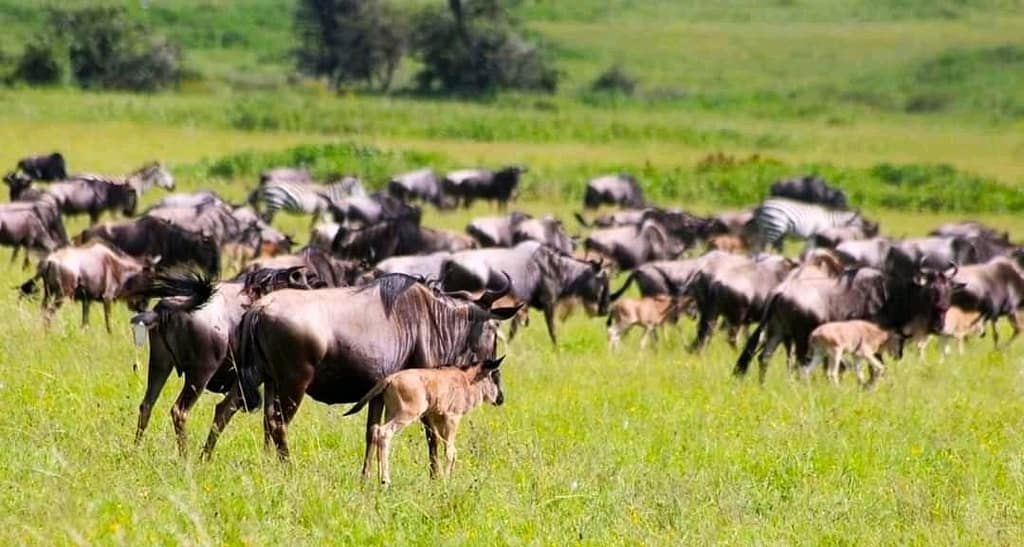
It has been observed that during the same period, Lions, Cheetahs, Hyenas, Serval Cats, Jackals and other predators also give birth. With so many Gnus being born at the same time, predators have an easy time providing milk and meals for their young ones since there is plenty of easy wildebeest kills. During this season, Elephants, Topis, Buffalos and other animals have also been spotted nursing their new borns.
The low season therefore offers you a great opportunity to see a lot of young predators and prey as they get introduced into the savage African wilderness. This is possible not just in Serengeti, but also in the Masai Mara, which is a northern extension of the former.
In Africa, rains are a blessing and not a curse and you probably don’t need much more evidence than what we have offered in this blog on why the low season is a great time for safari.
With our very affordable packages on offer, you now have every reason to visit Kenya and Tanzania in the months of April, May and November.
When it comes to delivering the ultimate African safari experience, you can then leave that to us and our team of highly experienced safari guides.
Feel free to contact us on: holidays@esseniasafaris.co.ke // +254 723 77 57 49 (whats app) for an expertly crafted safari package that suits your taste, budget and pace.
The Tano Bora- Masai Mara’s fascinating coalition of Five Cheetahs
It goes without saying that the Big Cats, (Lions, Leopards, and Cheetahs), are some of the biggest attractions that make Masai Mara one of the leading wildlife reserves in Africa, renown all over the world. Every game drive and every new visit to Masai Mara offers new sightings and a whole different game viewing experience.
Cheetahs are gentle and gracious cats. While on a game drive, they are mainly tolerant of human presence, and they love jumping over the safari jeeps in order to get a vantage point from where they can scan the plains for prey. Often, they will on a sunny day walk slowly closer and closer to the safari jeeps as you take photos or video, before finally lying under the car to protect themselves from the scorching sun.
A close encounter with Cheetahs will make you love them even more. They are skillful hunters who spend more time stalking their prey, so that they can spend less energy when making an ambush. Cheetah are the fastest mammals on land, capable of reaching speeds of up to 120km/h over short distances. The skillful cats can accelerate from 0 to 100 km/h in three seconds while on a hunting mission. While at full speed, the Cheetah can cover more than 7 meters in one stride and more than 25 meters in a second. This leaves their target prey with almost zero chance of escaping.
With a hunting success rate of about 58 %, the Cheetah is the best hunter if compared to Leopards at 38% and Lions at 30% (while hunting in pairs or a group). Although not gifted with a heavy built like Lions and Leopards, a Cheetah is intelligent enough to know when and where to hunt, where to live away from enemies, when to fight and when to walk away.
In the Masai Mara – Serengeti eco system, Cheetahs have been sighted abandoning their fresh killed prey to stay safe from Hyenas and Lions. Mother Cheetahs have however also been sighted standing up to bigger enemies like Lions who seek to kill their young ones.
A mother Cheetah protecting her cubs from a Lioness
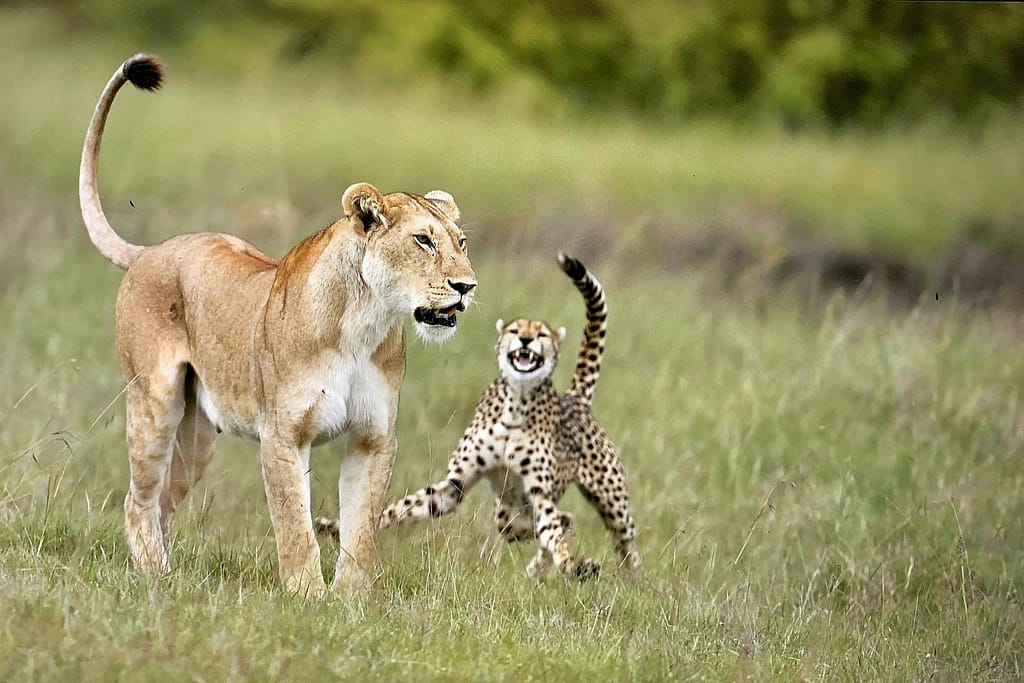
Cheetah sightings in Masai Mara had always been amazing. This was until early 2017 when a coalition of five male cheetahs emerged in the vast mottled plains. The experience became fascinating. The “Fast Five” or “Tano Bora” or “The Musketeers” as they are popularly referred to by safari guides have captured the hearts and lenses of so many Mara aficionados and turned the general perception about Cheetahs on its head.
UPDATE: OLPADAN, ONE OF THE TANO BORA COALITION MEMBERS AND FORMER LEADER OF THE GROUP WAS FOUND DEAD ON THE MORNING OF 26TH JANUARY 2022. HE HAD SERIOUS WOUNDS AROUND HIS BODY.
ALTHOUGH NO ONE WITNESSED HIS DEATH, IT IS BELIEVED THAT HIS FORMER COALITION PARTNERS WHO WERE ALSO SIGHTED IN THE AREA THE SAME MORNING HAD KILLED HIM DURING A FIERCE FIGHT. PLEASE SEE OUR STORY ON THE LINK ON THE FOLLOWING LINK:
UPDATE, 14th FEBRUARY 2022: On 13th February, Olarishani, a member of the Nne bora (form the original Tano Bora Cheetah coalition was discovered by guides lying down and in pain. He was seriously injured and vets were called to come and attend to him. Unfortunately, he succumbed to what appeared to be internal injuries. The four Cheetahs were crossing the Ol Talek River heading towards the Ol Kiombo side and it is suspected that Olarishani was attacked by a Crocodile, leaving him with life threatening injuries, which led to his death.
His coalition mates, Leboo and Winda were spotted calling out for Olonyok who was not with them. On 14th February, both of them have crossed back the Talek River from the Ol Kiombo side to Tipilikwani area and they seem to be seeking to reunite with Olonyok who is still not with them.
From tano bora, to nne bora and now the coalition is only three members, the tatu bora. Nature is really taking its course on this magnificent coalition.
The Tano Bora is not only the biggest known Cheetah coalition in the Mara, but also the first one recorded in recent years. The confidence, strength and skills that the Tano Bora exhibit during their escapades across the Mara has changed the assumptions that scientists had about Cheetah behavior.
To begin with, a coalition of 5 Cheetahs isn’t normal. Typically, a male Cheetah will upon reaching adulthood part ways with the mother to either become solitary, or join another male Cheetah to form a pair. This will help when it comes to taking down prey, and in guarding their territory.
The sighting of the 5 male cheetah coalition therefore attracted many wildlife lovers, including researchers who began to monitor this formidable coalition. Many actually thought that this would not last long.
Further follow up on these Cheetahs revealed that they are not brothers as some had assumed. Of the five musketeers, only two of them are believed to be of the same litter. No one knows about the other two, while it was also discovered that one of them is a lone ranger who is rumored to have come all the way from the Serengeti to join the group, despite having no family relations.
Oozing confidence that comes with the tyranny of numbers,
The Fast Five have turned the vast Masai Mara plains into a stomping ground for five odd years.
The marauding boys have become synonymous with thrilling hunts of prey that is bigger than themselves. During the wildebeest migration, they can take down more than one wildebeest within a day. They make killing a Topi look like a kid’s job. There is nothing as awe inspiring as catching all of the Fast Five in full-speed pursuit, or mid-kill committing their full bodyweight to bring an adult wildebeest down to the ground. In November 2020, the five were caught on camera bringing down an adult Zebra which they first had to separate from a dazzle of several others. This was the first time they were recorded on a Zebra hunt and the skills, speed and power that they exhibited made them look more like Lions than Cheetahs.
The Fast Five bringing down a Zebra
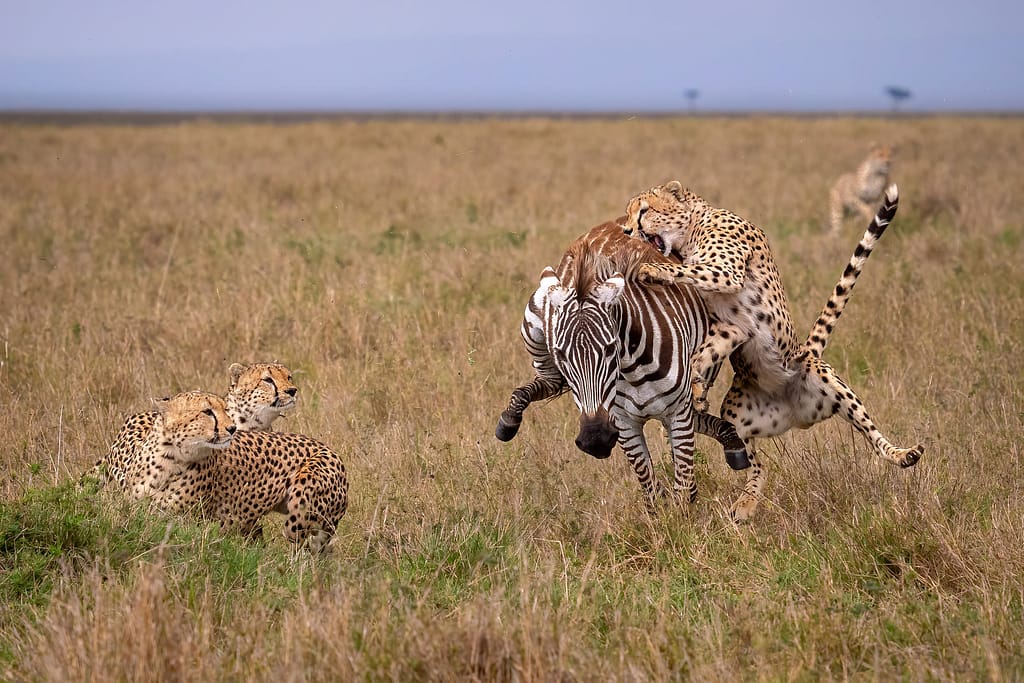
During their observation over the last 5 years in Masai Mara, researchers and guides have identified character traits that are unique to each of the five Cheetahs. This has led to each of them being given a name accordingly.
Olpadan had been identified as the coalition leader until recently. In the Maa language, his name means one with a great ability to shoot. Over the years, he has been noted to exhibit bullying tendencies. Olonyok, meaning the one who works hard to achieve better results in Maa language often the victim of Olpadan’s aggressiveness. This would often draw the attention of Olarishani, meaning the Judge in Maa language as besides being a skillful hunter, he is usually the peace maker in the coalition, often coming to the defense of any coalition mate when there are squabbles.
The fourth member is Leboo, meaning the one who always stays within a group. He is the one who is rarely spotted breaking away from the coalition, unlike the others who would occasionally desert the group for a few hours or days. The fifth member of the Fast Five coalition is Winda, meaning hunting in Kiswahili. True to his name, he is the one who mainly initiates many hunting attacks, and who displays more prowess in bringing down a prey.
Tano Bora taking down a Wildebeest
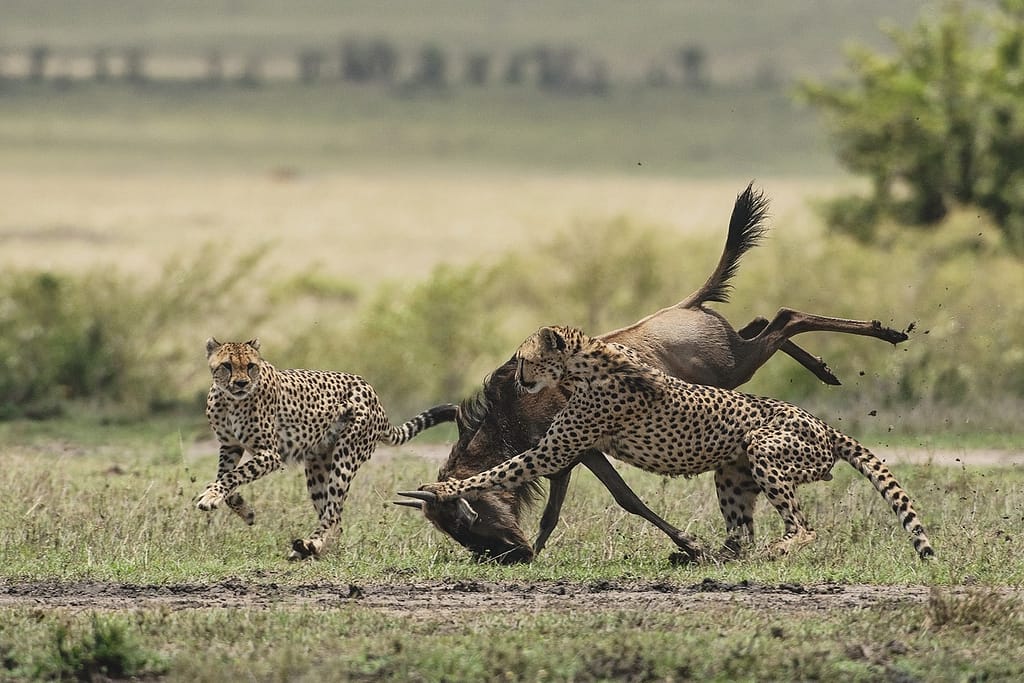
Lions are the ultimate social cats. They stay in prides that consist of Males, females, sub adults and cubs and have territories that they stay within. They will mainly hunt in pairs or in groups and have a social hierarchy, led by the dominant male. Often, they will be seen engaging in social bonding acts like licking of each other and fluffing of tails.
The same has been noted among the Tano Bora Cheetah coalition. You will see one cheetah or another periodically rousing itself, only to collapse into sleep next to another member of the coalition. This is a way of seeking physical contact with each other: an unmistakable hallmark of social bonding. They also exhibit social hierarchy under the leadership of Olpadan and Olarishani, who share the responsibilities of selecting the prey they will go for, mitigating internal conflict, and directing movement across their territory. The main advantage of Cheetahs being in a coalition is the fact that they help each other during hunting, and in protecting their territories. Throughout the Mara- Serengeti eco system, lone or pairs of Cheetahs have been seen to prefer going after Thomson Gazelles which are small in size, and sometimes warthogs and hares. But in big coalitions like the Tano Bora, they will often take down Wildebeests and even Zebras. While solitary Cheetahs and coalitions of two or three male Cheetahs are known to roam within a small territory, the Fast Five enjoy a big territorial range. They have been sighted far away from their main territory within the Tipilikwani area, going as far as past Keekorok and even crossing over the Talek River to spend some days at the Olare Motorogi Conservancy, outside the main reserve.
Wildlife enthusiasts hope that this coalition remains together long enough for more thrilling moments by photographers and for researchers to learn more about them, and Cheetah coalitions in general.
You are welcome to contact us for an expertly crafted and privately guided safari while enjoying a front row seat to encounter the Big Cats of Kenya and Tanzania. Contact us on: holidays@esseniasafaris.co.ke
Mobile and whats app: +254 723 77 57 49
Skype: Sam.Waweru3
How to plan and book the best Kenya & Tanzania combined wildlife safari
That Kenya and Tanzania are the top safari destinations that come to mind when many wildlife and adventure safari enthusiasts think of Africa is not much debatable. This is because these two East African countries which border each other offer the most authentic African wildlife safari experiences that give you a rare chance to experience Africa’s untamed wildlife from the front row seat.
The next thing that comes to mind is deciding if to book a safari to Kenya only, to Tanzania only or a safari which combines both. There are so many people out there who still keep on wondering on which of the two countries offers the better safari experience than the other.
To be honest, you can’t compare Kenya and Tanzania like for like, neither can you compare any park in Kenya to another in Tanzania. Every national park you visit will have some similarities to another near it, or even far across the border, but they will not be the same. You will always find a unique thing about each destination that you visit. Case in mind is the Masai Mara National Reserve in Kenya and Serengeti National Park in Tanzania. Although they share the same eco system, you will find both similarities and differences when you visit each. This is why we took our time to write a blog on choosing between a Masai Mara and Serengeti safari. Which park is best between Serengeti and Masai Mara?
Based on our expert advise on the blog and other reasons that we are going to give below, you will note that it is highly advisable to combine a safari to Kenya and Tanzania if you can afford it timewise and budget wise. You don’t have to choose between the two when you can visit both.
With Kenya having over 60 national parks and reserves, and Tanzania boasting of 22 national parks and the world famous Ngorongoro Crater Conservation Area, one would be forgiven to think that they will need months to explore the two countries during one visit. That would be a possibility if they were to visit each and every park and reserve. In this blog, we will focus on the highlights / leading parks in Kenya and Tanzania, and a hand-crafted safari itinerary which will ensure that you get the best possible safari experience on a minimum 12 days and maximum 14 days tour.
SAFARI OVERVIEW:
Day 1- Nairobi
Day 2- Lake Nakuru National Park
Day 3- Masai Mara National Reserve
Day 4 and Day 5- Masai Mara
Day 6- Serengeti National Park
Day 7- Serengeti National Park
Day 8- Ngorongoro Crater
Day 9- Lake Manyara National Park
Day 10- Amboseli National Park
Day 11- Amboseli
Day 12- Departure
Nairobi: The Green City in the Sun is East Africa’s most advanced and vibrant city. At least one night here is recommended. This helps kill the jet lag and acclimatize to the local weather for those who may be arriving on long haul flights. Also, most safaris depart at between 0700 hrs and 0730 hrs while a good number of international flights arrive at night. (If you can spare an extra night, the city is full of activities. A day tour to the Elephant Orphanage which is managed by the Sheldrick Wildlife Trust and the Giraffe Center where you can get up close with the rare Rothschild’s Giraffe would be a great idea. You may also visit the Nairobi National Museum and try out lunch or dinner at The Carnivore Restaurant or the Karen Blixen Coffee Garden Restaurant).
Lake Nakuru National Park: This is without doubt one of Kenya’s most popular national parks going by the number of both local and international tourists that visit this small park annually. Located about 3.5 hours drive from Nairobi City, the park which also hosts the alkaline Lake Nakuru is a safe refuge for the endangered Rothschild’s Giraffes and both White and Black Rhinos. It is one of the best places in Kenya to see Rhinos, which are part of Africa’s BIG FIVE. The park is home to four of the Big 5; Lion, Rhino, Buffalo and Leopard with only Elephants missing out since its small surface area cannot host the heavy feeding giants without causing a human – wildlife conflict. Seasonally, you will also be able to see the Lesser and Greater Flamingos that inhabit the lake when the alkalinity levels in its waters are high. Yes, you might miss a sighting of a Rhino during your game drives in Masai Mara or Serengeti but you will be very unlucky to miss one in Lake Nakuru, and that is why we have it as a highlight park while on your Kenya and Tanzania combined safari. One night at Lake Nakuru would be enough but you could still add one more if you want to explore the park deeper.
Masai Mara National Reserve: This, together with the adjacent Serengeti are arguably Africa’s leading and best-known parks. Masai Mara boasts of a high Big Cats to area ratio, making it one of the best parks to see Lions, Cheetahs, Leopards without having to drive for tens of kilometers. (Sometimes you even find them within meters of each other). The reserve is home to several Prides of Lions and Cheetah coalitions. Being home to over 90 mammal species and over 450 bird species, the Mara ecosystem offers you an opportunity to sight all of the BIG 5, Giraffes, Hippos, Zebras, Elands, Topis, Crocodiles, Spotted Hyenas, Wildebeests, Jackals, Vultures, Marabou Storks, Eagles, Egrets, Herons, Secretary Bird among others with relevant ease. This, together with the fact that some camps and park entrance fees and other levies are cheaper in Masai Mara compared to Serengeti are the reason we recommend 3 nights in the Mara as it offers you more value for money.
Serengeti National Park: After 3 nights in Masai Mara, we recommend at least 2 nights in the vast Serengeti National Park. Although the parks border each park, tourists have to exit one park and drive for hours to enter the other. This is because there are no official immigration posts at the park’s borders. One has to drive or fly all the way to Isebania / Tarime border crossing point where immigration offices are located. Please note that a drive from Masai Mara to Serengeti can take up to 10 hours. One can fly from Masai Mara to Migori town, from where they will be driven to Tarime border, where they will clear with immigrations and enjoy another short flight to Serengeti. This option is recommended for those who can afford the not so cheap flights between African parks.
It is indeed the dream of every nature and wildlife lover to visit the Serengeti and your game drives here will often exceed your expectations. From Lions to Cheetahs, Buffalos to Elephants, Leopard and Spotted Hyenas (which are the boogey men of the African night), Zebras, various Antelopes and millions of Wildebeests, Serengeti has it all. One moment you will find Lions enjoying a kill and the next moment you might find Cheetahs atop one of the Kopjes as they bask in the sun or scan the plains for the next victim. If you are after witnessing the Wildebeest migration, Serengeti is the place to be especially during the months of April, May, June, September, October and November when the world’s greatest wildlife spectacle unfolds here. The array of bird species is also awe inspiring and you will be thrilled by sightings of Ostrich, Vultures, Eagles’ and hundreds of other bird species not to mention the breathtaking scenery especially at sunrise and sunset.
The Ngorongoro Crater: Popularly referred as “Africa’s last garden of Eden”, a tour of the Ngorongoro Crater Floor and game drives along its flora and fauna rich floor is among the most sought-after safari experiences in East Africa. The wildlife density is very high, and you have a chance to see Black Rhino, Lions, Cheetah and some of the Biggest Elephant Bulls found in Africa, among others. Here, you can spend a night when driving from the Serengeti and enjoy an afternoon crater floor safari. Lodges located within the Crater rims and which offer views of the crater floor can be quite pricey. If your budget allows, spend two nights here, with the afternoon at leisure on the first night, followed by a half day morning crater tour the following morning, and the afternoon relaxing at the lodge as you enjoy the crater views.
Lake Manyara National Park: From the Ngorongoro Crater, we head to Lake Manyara National Park. This together with Serengeti, The Ngorongoro Crater and Tarangire are the most popular parks that make up Tanzania’s northern safari circuit. The forest, open plains, marshes and lake area within this park are home to an array of wildlife species; mammals, birds and reptiles. This small park is one of the best places to see the rare Tree Climbing Lions which can be spotted relaxing on tree branches. It is believed that the higher grounds offer them vintage points from where to monitor prey, and also help them stay away from the Tsetse flies that give them painful bites. One night is recommended since the park is small.
Amboseli National Park: From Lake Manyara, we are heading back to Kenya, this time through the Namanga border crossing point, from where we will drive further to Amboseli National Park. The park is strategically located at the foot of the snow-capped Mount Kilimanjaro, the highest mountain in Africa. Views of Mt. Kilimanjaro on a clear day, and the presence of some of the biggest herds of free ranging Elephants in Africa are the main attractions to Amboseli. Lions, Buffalos, Cheetahs, Hyenas, Wildebeests, Zebras, Giraffes, Jackals and Warthogs are some of the regular sightings here. Hippos can be seen wallowing in the marshes where you also enjoy seeing various bird species. Amboseli is one of the best places to see the Masai Ostrich, The Kori Bustard and the Secretary Bird. As you normally arrive in the evening, it is recommended that you spend two nights so that you spend the next full day exploring various parts of the park, including the Observation Hill where you can enjoy views of the park’s landscape.
From Amboseli, its time to head back to Nairobi. A farewell lunch or dinner at the Carnivore Restaurant is always the icing on the cake that an African safari is, so the Carnivore Experience is highly recommended. From here, you can fly to Diani Beach or Zanzibar for that well-deserved R&R basking under the African sun, as you get some sun in between your toes while walking on the pristine, White Sandy Beaches that East Africa is endowed with.
Before we go into how and where to book your best Kenya and Tanzania safari combination, we need to mention two more parks which we recommend for those who might be having an extra budget and time.
Samburu National Reserve: Popularly known as Kenya’s jewel of the north, Samburu National Reserve is without doubt one of Kenya’s best kept safari secrets. Located in the arid and semi-arid northern Kenya, this reserve attracts less tourists due to the remoteness of its location, yet it can compete pound per pound with other leading parks in East Africa. What makes Samburu stand out though is the presence of the Special 5; animals that only exist north of the Equator and not found on the south. These are the Gerenuk, Reticulated Giraffe, Grevy’s Zebra, Beisa Oryx and the Somali Ostrich. Together with the spectacular scenery of the rugged hills and the contrast between the dry open grassland savannah and the lush vegetation on the banks of the Ewaso Nyiro River, these attractions make Samburu a go to destination for travelers with more days to explore East Africa. Minimum 2 nights are recommended and they can be placed between your one-night stay in Nairobi and your 1-night stay at Lake Nakuru National Park.
Tarangire National Park: Another park that we recommend for travelers who have an extra day to spare is Tanzania’s Tarangire National Park. From our above itinerary one can spend a night in Tarangire after their stay at Lake Manyara and before their departure to Amboseli. The park is characterized by its iconic Baobab Trees and vast herds of Elephants and is home to various mammal and bird species that inhabit its woodland grasslands. You may see Lions, Cheetahs, Leopards, Buffalos, Wildebeest and many others as well as north African and European migratory bird species. Tarangire boasts of Tanzania’s second highest concentration of wildlife and is a park well off the beaten track, visited by fewer tourists but with much to offer.
How and where to book the best Kenya and Tanzania Combined Wildlife Safari
Having listed our recommended parks for the perfect 12 to 14 days Kenya and Tanzania safari, we now look at another important factor. Where and how do you book your safari?
The tour company that you plan and book your safari with determines how much you get out of your safari experience. The online space is full of companies that purport to offer safaris to Africa. The simple rule is, know them before you book with them. Always go for a professionally operated, licensed, experienced and reputable tour operator. That way, you will be dealing with safari consultants who have profound knowledge of the destinations they offer, who will provide accurate and unbiased guidance and a company that will be honest in their pricing. Always know where the company you are booking with is located. A locally based tour operator who is licensed and a member of reputable tour operator associations is highly recommended. With them, you can be sure that you are booking with an ethical, well established company, and that the money that you pay them will be safe in their hands. (There are a few instances where guests have booked online, only to arrive and find that the company they paid does not exist). Booking with a professional tour operator also means that you will be allocated a professional and passionate safari guide and also allocated quality, well equipped safari vehicle. This will ensure seamless operation of your safari and you will benefit a lot from the knowledge of the safari guide.
Some of the Memberships that quality tour operators in Kenya and Tanzania belong to are the Kenya Association of Tour Operators, Tanzania Association of Tour Operators and the American Society of Travel Advisors (ASTA).
WHICH IS THE BEST TIME BOOK MY KENYA AND TANZANIA SAFARI?
When it comes to African safaris, the earlier you book the better. This is because of the limited number of quality and strategically located safari lodges and camps inside the parks. Booking at least one year before your arrival especially for the months of June to September would help you secure some of the best lodges. You can pay at least 30% of the total safari and clear the balance at least 60 days to your arrival date. If not in a position to book early, you can book anytime, but you might miss out on staying in some of the best safari lodges and camps as they will be fully booked.
Essenia Safari Experts Ltd offers expertly crafted safaris to Kenya, Tanzania and Uganda. You can book a safari to one of the countries or one that combines two or three of them. Some of the most popular Kenya and Tanzania combined safaris are the 12 days Kenya and Tanzania Highlights Safari which can be booked for any month of the year, and the 8 Days Masai Mara and Serengeti Migration Safari which focusses on the annual wildebeest migration between the months of July and October. Please feel free to CONTACT US should you need a safari tailor made to suit your interests, pace and budget.
Kenya, Tanzania and Uganda Resume Tourism Activities
Greetings from the team at Essenia Safari Experts Ltd.
We hope that you are all safe and doing your best to survive through the adverse effects of the Covid- 19 pandemic on tourism and our day to day lives.
We are hopeful that the storm will be over soon, and that tourism will soon be back on its feet and running smoothly again.
The aim of this publication is to give you a factual report on resumption of tourism services in Kenya, Tanzania and Uganda which are our core destinations.
KENYA:
As of today, 7th September, Kenya has recorded a total of 35,013 cases of Covid 19 within the country and a total of 597 deaths.
This is since the first case of the virus was reported on 13th March 2020. Most of the cases (about 85%) have been asymptomatic (not showing any symptoms of being sick) and have therefore been recovering from home. We have also noticed a reduction of daily new infections in September compared to July when we recorded the highest infections per day). We recorded 83 new cases on 6th September, compared 960 new infections reported on July 26th.
The whole country has been on a night curfew from April until now (currently on force between 2100 hrs and 0400 hrs). The cessation of movement outside the two major cities of Nairobi and Mombasa was lifted on 7th July 2020. Since then, thousands of Kenyans have been touring various parts of the country, especially Nairobi National Park and the Masai Mara National Reserve where the annual wildebeest migration is currently taking place, besides the usual amazing sightings of the BIG CATS and other wildlife.
On 1st August 2020, the Kenyan government reopened our international airports for international airlines. Tourists arriving from a list of 130 countries are allowed into Kenya without a requirement for a 14 days quarantine. https://www.kcaa.or.ke/sites/default/files/docs/covid_19/exempted_states.pdf . This list is being updated regularly after consultation with the ministry of health.
Passengers are however supposed to present a negative Covid 19 PCR test certificate issued at least 96 hours before arrival and must not display any symptoms upon landing at the airport.
In July 2020, the ministry of tourism introduced post Covid 19 health and safety protocols to be implemented by hotels and tour operators. This was to ensure that both guests and staff can enjoy their safaris and holidays within Kenyan without risk of contracting the virus. This was followed by the endorsement of Magical Kenya as a SAFE TOURIST DESTINATION by the World Travel and Tourism Council.
We as Essenia Safari Experts have already implemented the protocols in our offices and safari vehicles, and are only working with lodges and camps that have been certified as post Covid 19 compliant.
Since August, we have welcomed a few international tourists who have benefited from the strict safety policies that we have in place. You can therefore start marketing Kenya with confidence that your guests will enjoy the highest safety levels.
We have very special rates for non-residents for travel between September and 20th December 2020 and are welcoming enquiries and bookings for year 2021.
TANZANIA:
Tanzania last recorded its corona virus cases on 29th April 2020 when there were 509 total cases reported. Since then, the government went ahead reopened the Dar Es Salaam and Kilimanjaro International Airports on 18th May 2020. In early June, the president declared Tanzania as “Corona Virus free after days of nationwide prayers”. Since then, all citizens have gone back to their normal lives and our colleagues and staff in our Arusha office report that they don’t see any evidence of the Corona Virus. After thorough training of staff, the ministry of tourism in Tanzania introduced post Covid 19 health and safety protocols which are being implemented by all tour operator and hoteliers. This was later followed by the endorsement of Tanzania as SAFE TOURIST DESTINATION by the World Travel and Tourism Council in July 2020.
Tanzania has since then being welcoming tourists and travel agents back to the parks, and all have confirmed that they indeed felt safe during their safari to Serengeti, Tarangire, Ngorongoro and other parks. All nationalities are welcome to enter Tanzania, and a presentation of a Covid 19 negative certificate is NOT MANDATORY on arrival. All tourists are being allowed express arrival as long as their temperatures are below 37.5 degrees and they do not display any visible symptoms.
We have very special accommodation rates for Tanzania valid from September to 20th December 2020. Please contact us for special packages / details
UGANDA:
As of 6th September 2020, Uganda had recorded 3,667 Covid 19 cases and 41 deaths. After 4 months of lockdown, Uganda has begun a soft reopening of the country. This began with the locals being allowed to visit Savannah National Parks like Murchison Falls and Lake Mburo, while primate parks like Bwindi and Kibale Forest remained closed for fear of humans spreading the virus to the endangered Gorillas and Chimpanzees.
On 3rd September 2020, The Uganda Wildlife Authority reopened all wildlife and primate parks for tourism. This was after implementing measures and guidelines that will ensure that both tourists and wildlife are safe.
In the last few weeks, Uganda has been implementing its health and safety protocols and training staff as they prepare to welcome international tourists back. Gorilla tracking and Chimpanzee trekking safaris have now resumed.
We have been made aware that the Entebbe International Airport will reopen on 1st October 2020. We shall keep you updated an all developments and requirements to enter Uganda.
With the information above, we hope that you can now plan your safari to visit East Africa with confidence and peace of mind, knowing that you are going to be in safe hands.
We are taking new bookings for Kenya, Tanzania and Uganda both short term (September to December) and long term (year 2021) travel.
WILDEBEEST MIGRATION: The wildebeest migration in Serengeti and Masai Mara is currently at its peak with millions of Gnus congregated both in Masai Mara and northern Serengeti where epic River Crossings are being witnessed. There are very few travellers to experience this spectacle and we have incredible rates on offer. Please contact us for details.
You can rest assured that we will offer the best deals, and our usual quality and personalized services.
We thank you for your choice of Essenia Safari Experts Ltd as your preferred partner and ONE STOP SOURCE for expertly crafted and competitively priced safari holidays in Kenya, Tanzania and Uganda.
You are welcome to visit our website: www.esseniasafaris.com and FACE BOOK Page: https://www.facebook.com/Esseniasafaris for more information and regular updates.
Which park is Best between Serengeti and Masai Mara?
SERENGETI OR MASAI MARA, WHICH IS BEST TO VISIT FOR SAFARI?
For many ardent wildlife safari lovers looking for an authentic African wildlife safari experience, the first destinations that come to mind are Kenya and Tanzania which are home to the leading national parks of Masai Mara and the Serengeti. For those planning to visit East Africa for the first time, the second question that comes to mind is which one to visit first between these two world renowned parks.
As destination experts who have traversed these two iconic wildlife reserves several times over many years, we are here to guide you into making an informed decision, by taking you through the finer details of each park.
But before we start describing these two amazing destinations, one thing worth mentioning is that both Masai Mara National Reserve and Serengeti National Park share the same eco system. In fact, they are part of each other, only divided by political boundaries.
Covering an area of 14,570 sq. km, the Serengeti, derives its name from the Maa language of the nomadic Masai who originally inhabited this land. “Siringet” means endless plains or the plains that tend to extend. The Masai who are the ancestral inhabitants of Serengeti came up with this word in reference to the vast and seemingly endless plains of this national park which is located in northern Tanzania.
On the other, the Masai Mara National Reserve which is located in south western Kenya derived its name from the same Masai tribesmen. This is the place that the Masai used to call the land with “mottled plains” in reference to Masai Mara’s vast plains whose habitat seems from a distance to be dotted with spotted circles of mainly Acacia trees, Savannah, Scrubs and cloud shadows that are synonymous with the Masai Mara. Although located in Kenya, the Masai Mara which covers an area of 1,510 sq. km is in fact an extension of the Serengeti to the north, with only the Mara River and political boundaries putting the two apart. Comparing the size of both parks, Masai Mara which is smaller and with a high wildlife to area ratio offers one advantage when it comes to ease of seeing the BIG CATS from close quarters. On a lucky day, it is not unusual to come across some if not all members of the big five within a 3 hours game drive.
Both the Masai Mara and Serengeti are home to prides of Lions, Herds of African Elephants and Buffalos, Towers of Masai Giraffes, Clans of spotted Hyenas, Dazzles of Zebras, Schools of Hippos, Troops of Baboons, Black Rhinos, Jackals, Foxes among others. The plains of both reserves are teeming with hundreds to thousands of antelopes; impalas, gazelles, topi, hartebeest, eland and yes, the wildebeests that consist of both the resident and migrant herds. Cheetahs, Leopards and even rare cats like Serval Cats and Caracals are also present in both parks.
Until to now, I know you might still be asking, “so do I first visit Masai Mara, Serengeti or both”?
Our answer is, if you have time and resources, visit both of them on a Kenya and Tanzania Safari that we can tailor make for you.
If you can’t manage to visit both at a go, you are still guaranteed an amazing safari viewing experience, mainly depending on the number of nights you spend, the location of your lodge or camp and your choice of safari operator. We mention the latter because it is always important to book your safari with a professional and seasoned company whose safari consultants understand the destinations immensely, and who will of course allocate you an excellent, knowledgeable guide and safari vehicle. When doing the final price comparison, often this company will not offer the cheapest quote, since cheap turns out to be expensive in some cases. They will however have a reasonable quote depending on your budget and choice of accommodation.
DESCRIPTION AND COMPARISION OF THE MASAI MARA AND SERENGETI
Based on our experience in travelling the length and breadth of the Serengeti for over 10 years, and traversing the Masai Mara – both the main reserve and Mara Triangle as well as the many private conservancies for over 15 years, let’s offer you a comparison of these two iconic parks that attract the highest number of tourists to East Africa. As I had mentioned before, they share the same grassland ecosystem and host the greatest wildlife spectacle on earth- The Wildebeest Migration.
You may have read and seen from several sources that the scenery offered by these two amazing areas is “Open Grassland”. To a large extent, this is true. However, it would only be 100% true that Masai Mara and Serengeti are savannah grasslands if compared to desert, jungle and mountains. However, those who have observed the two parks more keenly will agree that there is a huge variation when you consider the terrain, scenery and habitat of the Mara – Serengeti ecosystem.
Southern Serengeti extending all the way to the Ngorongoro Conservation area which also incorporates the Lake Ndutu area forms the largest, flattest, seemingly never-ending short grass plains. This is the area where the great herds of thousands of migrant wildebeests’ roam and also give birth (calving season), from December to March. This is the time of the year when the area enjoys an abundance of water and fresh, soft grass just after the short rains season from November to December.
However, a move slightly north sees the vegetation change to the breathtakingly beautiful sweeping plains found in Central and Eastern Serengeti. These predominantly long grass plains intersected by Rivers and dotted with Simba, Masai and Moru Kopjes (Granite Rocky Outcrops) from which the “Pride Rock” in the Lion King Movie drew inspiration are to many the epitome of The Serengeti Experience, a typical Serengeti that offers a feeling of beauty and abundant space.
A move further to western and northern Serengeti introduces you to a hillier area that offers a different landscape. Here, you will also observe significantly more woodland, although the wide-open plains remain within your vicinity as clearly evident in the Wogakuria Hills in northern Serengeti. At the foot of these stunning hills, you will find the Mara River cutting across the north western sector of the Serengeti in an area which provides a location where some of the best River Crossings that one is likely to witness take place.
Looking across the border is Kenya where you will find most of Masai Mara’s sweeping open plains located right inside the officially gazetted Masai Mara National reserve, which also includes the Mara Triangle in the reserve’s western Corridor. The Mara Triangle is basically the land found to the West of the Crocodile infested Mara River as it cuts its way southwards through the world-famous reserve. From here, the stunning Siria Escarpment offers a back drop, making the Masai Mara picture perfect.
Flanking the Mara River as it creates its path through the reserve is a dense forest, a swathe of green snaking through an otherwise open and seemingly “yellow” landscape.
If you move northwards on your way out of the main (official) reserve, you will end up in the privately managed wildlife conservancies that are more exclusive. Just so that we don’t confuse you, the conservancies are made up of land that the native Masai communities have handed over to private entities for conservation and tourism activities. They keep their livestock away from the land and in return get significant proceeds that are collected through tourism activities. Here, the terrain becomes more diverse. You will come across acacia woodland, rocky escarpments, plateaus, hidden valleys and multiple River courses. Here, the scenery can keep on changing as you move from the vast “Aitong Plains” area to different areas like the aptly named “Leopard Gorge”.
Found in abundance in all the various habitats that we have covered is a plethora of wildlife. One could say with confidence that there is no other part of the world that can boast to have the amount and species of wildlife that the Serengeti – Mara ecosystem hosts, especially if we focus more on land mammals. A huge number of herbivores like Thomson and Grants Gazelle is supported by the vast grassland ecosystem. Wildebeest, Zebra, Eland and Wildebeest which also form part of the great migration thrive here together with large numbers of Giraffes, Buffalos, Elephants, Hippopotamus, Hartebeest, Topi, Impala among others species. In the circle of life, prey is the main source of food for predators so you are guaranteed to come across Lions, Cheetahs, Leopards, Spotted Hyenas, marauding packs of Wild Dogs and the ferocious Crocodiles that inhabit the Mara and Grumeti Rivers.
This leads us to the most important question. Between the Masai Mara and Serengeti, which park could claim to have a better wildlife viewing experience than the other? This is for sure not an easy question to answer. In honesty and based on our years of travel between these two iconic parts, it would not be fair or even correct to say that one is better than the other. Looking through the finer details though, we can pick out a few points that can help you decide for yourself.
With the Serengeti being bigger in size (9 times the size of Masai Mara), and some parts of it having a lower concentration of wildlife than others, (eastern and northern Serengeti except the area neighboring the Mara River), one would favor Masai Mara. Besides being larger in size, the Serengeti which is a park has fewer driving tracks compared to Masai Mara which is a smaller reserve, with authorities having created more driving tracks. This gives the Mara an advantage in that the wildlife concentration is high, with more driving tracks also offering guests higher chances of getting up close with the Big Cats and other animals. It is not unusual to views Lions and Cheetahs in the Serengeti from hundreds of meters and even kilometers away.
The Serengeti also happens to be mote seasonal with the vegetation and game viewing experience changing quite dramatically during some months. Case in mind is the short grass plains of Southern Serengeti. These are usually dry and lacking in pasture and fresh water especially between July and October. The drier and harsher environment drives both prey and predator away, making the game viewing experience less exciting as it usually is between the wet and rainy green season of December to May.
Comparatively, The Masai Mara although also having different seasons, including the migration season from July to October still has plenty of resident game that does not migrate. Although the reserve also suffers from severe drought and harsh conditions just like the Serengeti, random rains do fall at any time of the year thus making the conditions fairer.
Moving away from the game viewing and the animals that you are likely to see; we now look at optional activities that enhance your safari experience. In both the Serengeti and Masai Mara (main reserve), your game drives are mainly restricted by authorities to between 0600 hrs and 1800 hrs. You are also restricted to well traversed driving paths which you have to stick to. In the Serengeti, there are very few places where walking safaris or night game drives are permitted. The case is however different in Masai Mara’s private wildlife conservancies. Here, you have an option for night game drives, walking safaris and even off-road driving. Although this is not offered at all the camps, it offers an enhanced wildlife experience to the discerning traveler. It is also worth noting that the private conservancies have fewer tourists, and the guides here adhere strictly to park regulations. Unlike the other parts of the reserve, here you can spend hours around a pride of Lions or a Cheetah family just by yourselves, or in the company of very few other safari jeeps.
When it comes to witnessing the wildebeest migration, the timing of your safari matters most, whether it is in the Masai Mara or Serengeti. With the Masai Mara, this happens between July and October, although herds have been recorded arriving in June and leaving in September. The last few years have also seen the herds return to Serengeti in late August, only to return to Masai Mara towards October, its all nature and instinct driven.
If you want to witness the migration in the Serengeti, it happens almost all year round. From December to April, you need to be in the south, May and June are the months it happens in Central and Western parts of the park. From July to November, the phenomenon takes place in the north around Bologonja and Kogatende crossing over to the Masai Mara.
If you are keen on seeing the River crossings, the months of July to October offer you the best chance. You can witness the migrating herds of wildebeests and Zebras make that “plunge of life or death” across the crocodile infested Mara River from either the Masai Mara or Serengeti, as well as smaller Rivers like the Talek River in Masai Mara and the Grumeti River in Serengeti. While Masai Mara has been known traditionally as the best place to see the River crossings, the opening up of the northern part of the Serengeti for camps to be built has seen the region steal some limelight from the Mara. Northern Serengeti has a good number of crossings points where one can camp waiting for the “out of this world show” to take place.
If you are after seeing predators, the Mara, with its several prides of Lions inhabiting a smaller area probably has an edge over the Serengeti. Cheetahs are known to favour open, flat grasslands from where they can monitor both prey and enemies. This would make Serengeti their favorite. However, the open plains all the way from Sopa area all the way to Talek and extending all the way to the conservancies are areas that abound with Cheetah population in the Masai Mara as well. These include the now popular “Tano Bora” or Fast Five coalition of marauding male cheetahs that have been traversing the vast Mara plains since year 2017. The two parks can therefore be considered great for Cheetah viewing.
A factor which is worth considering when looking at your game viewing options is the exclusivity and flexibility of your game viewing experience. Most tourists, especially photographers would wish for a scenario where you can take photos with few safari jeeps around, and with a possibility to drive closer to the wildlife. The private Mara conservancies do often offer that much cherished scenario. On the other hand, a sighting of a Leopard in the central Serengeti plains or a Cheetah in the sweeping southern plains is more likely to attract tens of safari jeeps. The same applies to the main Masai Mara Reserve. This is what makes the private Masai Mara conservancies a better location for your game viewing since the authorities are very strict on the number of safari vehicles that are permitted at a sighting. Often, you can end up savoring the views and taking photos all by yourself, or with only a few other tourists around. This is an important factor for many photographers.
The location of your camp and the area of the Masai Mara or Serengeti where you stay during your visit is another important factor. If not properly guided, you might end up staying at an area where it takes you hours of driving before for get to the prime game viewing areas. This mainly applies to the Serengeti since the Masai Mara has an advantage of having a slightly more condensed game viewing area. Some camps are however located outside the park gates and you can drive for an hour plus before you start seeing some major sightings. That is where a knowledgeable and honest tour operator like us comes in handy once again.
In terms of pricing, it generally costs you more to stay in the Serengeti compared to Masai Mara. Lodges and camps in Tanzania are pricier, and you still have to pay park entrance fees and concession fees on top of accommodation. On the other hand, Masai Mara is not necessarily cheap, but it offers you more accommodation options to choose from. This ranges from decent, budget tented camps that cost as low as around USD 160 per double room per night during the low season, to top luxury tented camps that cost over USD 2,000 per double room per night (including game drives) during the peak season. Unlike the Serengeti, in Masai Mara, you are only charged park entrance or conservancy fees. Both Serengeti and Masai Mara are simply magical and you will always find something unique in each. You can try out our 8 days Masai Mara and Serengeti Migration Safari and feel that witnessing the migration from each of the two regions offered its own unique experience. This is possible by road, and we now have options of flying all the way from the Masai Mara to Serengeti and vice versa, making it possible for you to enjoy your breakfast in one park, and lunch in the other, thus saving you hours of driving.
If the question on your mind right now is the number of nights you need to spend in any of these two parks, the advice that we would give based on time we have spent exploring these amazing destinations is minimum 3 nights in each. This ensures that you enjoy your game drives with no rush, and gives you time to search for some animals like Leopards and Rhinos that often proof elusive. Depending on the time and budget at your disposal, and your main interests during your safari, you may then spend up to 10 nights. This could probably be divided by half between the two fascinating destinations. We highly recommend the longer stays especially if you are a keen photographer, or if you are trailing the migration which can sometimes turn tricky especially when it comes to River crossings.
Normally, most visitors seeking to visit both Masai Mara and Serengeti have an interest in exploring other leading parks in Kenya and Tanzania. There are several options available, including our bestselling- 12 Days Kenya and Tanzania Highlights Safari which is by road, with optional flights between Masai Mara and Serengeti available.
Feel free to contact us for a free quote by a passionate and knowledgeable safari consultant.
A Guide to the Serengeti – Masai Mara Wildebeest Migration
The Wildebeest Migration
This is one activity which is on top of every wildlife safari lover’s bucket list. Yet still, there are other thousands of travelers around the world who have experienced it once, twice or more but still can’t wait to be back to either Serengeti or Masai Mara to catch one more glimpse of the greatest wildlife spectacle on earth.
A wildebeest’s journey begins at birth and only ends at death. Unknown to many, the annual wildebeest migration that involves over 1.5 million wildebeests accompanied by Zebras and other antelopes is more of a life time process rather than an annual event. However, it is the movement between Serengeti in the north and Masai Mara in the south that gets most of the attention, more so because of the epic dives across the Crocodile infested Mara River in search of greener grazing pastures and water on the other side.
In this edition, we take you through the A to Z of the wildebeest migration.
January to March: Wildebeest Calving Season
This is the time when the marauding gnus gather on the wider Ngorongoro conservation area, south of the Serengeti after their long and tedious journey back from the Masai Mara, through the northern part of the Serengeti. At this time, the short rains have just ended and the area has adequate grass and watering spots. The gnus can be seen moving between the open grass savannah, the bushes and even swamps. Calving, one of the most important and interesting chapters in a Gnu’s life happens here between February and March, in what is popularly referred to as the wildebeest calving season. January is a hot month, and most of the females are heavily pregnant. This means that they will soon be giving birth, and tender grass is needed for the young calves to feed on. The Gnus are therefore waiting for the signs of the first rains. Their movement is therefore dictated by signs of rains, and no one knows how they sense the rains. It has been observed in the last few years that Wildebeests can delay giving birth depending on the weather patterns. In years when it has been very dry, and rains have delayed, they have also taken their time before introducing the young ones to the cruel African Savannah. Their movement during this season can be unpredictable, as they can move swiftly from one area to another within days. Once the rains begin, the females give birth (almost all at once) in what is referred to as synchronized birthing. During this window, as many as 8,000 calves are born every day for a period of about 3 weeks, with over half a million new wildebeests being born by the time it’s over.
It’s now rainy and there is enough pasture, and new calves born, translating to lesser movement of the animals. This is a very popular travel season and you have a high chance of witnessing the migration and wildebeest calving season in the Lake Ndutu and Lake Masek area. Considering the fact that a Gnu’s journey is mainly instinct led, this may vary by 10 or 20 kilometres, but without fail the wildebeest herds gather between Ndutu, Matiti Hill, Naabi Hill, the Goll kopjes to the east and Olduvai Gorge. If you want to stay here during this season, there is a selection of a lodge as well as permanent and semi-permanent tented camps to choose from.
Understanding the Synchronized birthing by Wildebeests:
One would wonder why Wildebeests would give birth during the February to March window, and almost all of them at a time. It’s only the Wildebeests that could answer that better, so it’s unfortunate that humans don’t have a way of communicating with them. However, as humans we are blessed with the ability to study and interpret nature.
Wildlife specialists consider the giving birth to many calves at the same time as the Wildebeest’s strategy to saturate predatory activity, as many calves born at the same time have a higher chance of survival than if the births were spread across the year. This is because predators that await the birth of the weak and powerless calves (easy prey) cannot be able to kill all the new born s. Most survive this and the future generation of wildebeests begins here.
It would not be fully correct to say that predators enjoy easy kills. Over the years, Wildebeest mothers have instinctively known to give birth on the shorter grass plains, from where it is easier to spot predators approaching. They are joined by other mothers who form protective barricades around the most vulnerable newly borns in order to ensure that they have a greater chance of survival. If you are in Serengeti around this time, it is not unusual to see protective mothers trying to fight back when big cats like Cheetahs and even Hyenas attack.
With most of the new calves being born at the beginning of the long rains season, the Serengeti teems with soft green grass which makes for a succulent diet for the young calves. As you will note later in this article, the calves need to be strong enough in readiness for the long, risky and tedious journey to Masai Mara. This freshly sprouted grass is therefore important to the new born Wildebeests, meaning that this is an ideal period for them to be born, as they have a better chance of survival into adulthood.
It has been noted that its not only the Wildebeests that give birth around this season. Zebras, Buffalos, Gazelles, Cheetahs, and even Lions are being sighted commonly nursing young ones so you can expect to see a lot of calves, cubs, and foals if you are visiting Tanzania during this time.
April and May: April marks the peak of the long rains season. The wildebeests and their weeks old calves are now following the grazing paths from Southern Serengeti towards the central plains. They will be spending the next two months traversing the central Serengeti plans as they graze. From Naabi Hills all the way to Seronera, Turner Springs and Lake Magadi, herds comprising of different herds of wildebeests can easily be sighted in Central Serengeti during this season, and spreading all the way to Kusini, Simba Kopje and Moru Kopje areas. There is a high presence of big cats here so you can expect breath taking predator and prey actions if you visit during this month. This being the most visited part of the Serengeti there are several lodges and tented camps to choose from.
These include Serengeti Serena Lodge, Kusini Camp, Serengeti Sopa Lodge, Seronera Wildlife Lodge, Serengeti Kati Kati, Ole Serai Luxury Camp- Turner Springs, Ole Serai Luxury Camp- Moru Kopjes, Serengeti Safari Lodge, Four Seasons Serengeti Lodge, Sametu Camp, Serengeti Heritage Camp among many others.
It is important to note that this is a muddy season so you should be ready for some adventure in the black cotton mud.
By end of May, the central Serengeti plains are becoming dry, and the pastures depleted. The migration has by now gained momentum and the migrating herds move towards the Grumeti River on the western Serengeti corridor. Due to the dispersal of the moving herds, it might take you hours driving between the leading herds and the tail end. Some herds may already be in Mbalageti and others as far as Nyamuma Hills. Huge herds can be seen congregating along the pools and channels of the Grumeti River which they need to cross in order to continue with their journey. (The River hasn’t had much water around this time in the last few years but that could change in the future). The River is crocodile infested but you may not see spectacular crossings and encounters like you might see on the Mara River.
There are not many lodges located West of the Serengeti so its recommended that you book your safari as early as possible. Some of the Lodges and camps located in this area are Mbalageti Lodge, Grumeti Migration Camp, Olakira Camp, Asanja Grumeti Camp and Kirawira Serena Camp.
From July, the Serengeti is now dry, and the landscape arid. This is the mating season, and the time the migrating herds are crossing the Mara River. There is no better time to witness River Crossings. The migration is now moving faster in pursuit of water and greener pastures.
August is the month when the migration is most constant. You have a great chance of witnessing River Crossings both from the Serengeti and Masai Mara side. The herds can be seen north of the Serengeti, south east of Masai Mara around the Sand River and in the central Masai Mara plains. They will then spread over moving to the Mara Triangle and other areas of the vast reserve. Between now and September, the Mara will be home to big herds of the migrating herds, although some have been seen to remain in Northern Serengeti over the last few years. (This has been occasioned by irregular rain patterns that ensure that there is adequate pasture both in northern Serengeti and Masai Mara). Herds have even been seen crossing to the Masai Mara only to turn towards the Serengeti after a few days, and vice versa). During this season, there are a few permanent and semi-permanent tented camps strategically located along the Kogatende and Bologonja areas in northern Serengeti.
In Masai Mara, there are several lodges and camps that offer you close proximity to where the action is taking place. In Central Maasai Mara, there are many lodges and camps to choose from, all located a few hours drive to the Mara River with en route game drives. If you want to be closer to the River, Ashnil Mara Camp, Mara Serena Safari Lodge, Entim Mara Camp, Governors Camp, Mara Crossings Camp, Mara River Camp, Rekero Camp, Mara Intrepids, Mara Explorer are some of the options to choose from. If you want to combine big cat sightings and the migration trail, camps located along the Talek River would be ideal. These Include, Fig Tree Camp, Mara Leisure Camp, Tipilikwani Mara Camp, Base Camp Masai Mara, Il Keliani, Azure Mara Haven and Mara Simba Lodge. They are all located along a prime game viewing area, and about two hours to some of the major crossing points.
In August and September, the concentration of Lions, Cheetahs, Leopard, Cheetahs and other predators near the migrating herds is high. You are likely to experience successful hunts, find predators or scavengers on a kill, or resting by the shades after enjoying a heavy meal.
By October, the migration is almost completing the cycle and scattered herds are heading southwards. By early November they have moved from Kenya to the eastern limits of the Serengeti. They retrace their steps north via Lobo and by December, they are spread around the Southern part. From here, they are joined by herds of Zebra and other plains game and are venturing deep into the southern plains where the vegetation is lush after the rains. The calving season will soon begin, and the Great Migrations continues to move rhythmically in a clockwise direction.
In as much as we have tried to be as accurate as possible, please note that this is only a guide based on our observation of the wildebeest migration over the years. The migration is however a natural, instinct led activity mainly motivated by pursuit of pasture and water. The wildlife moving patterns may therefore vary from time to time. We are available to offer tailor made safari packages based on accurate to near accurate movements.
Need a safari customized to suit your taste, budget and pace? Write to us on: holidays@esseniasafaris.co.ke.

